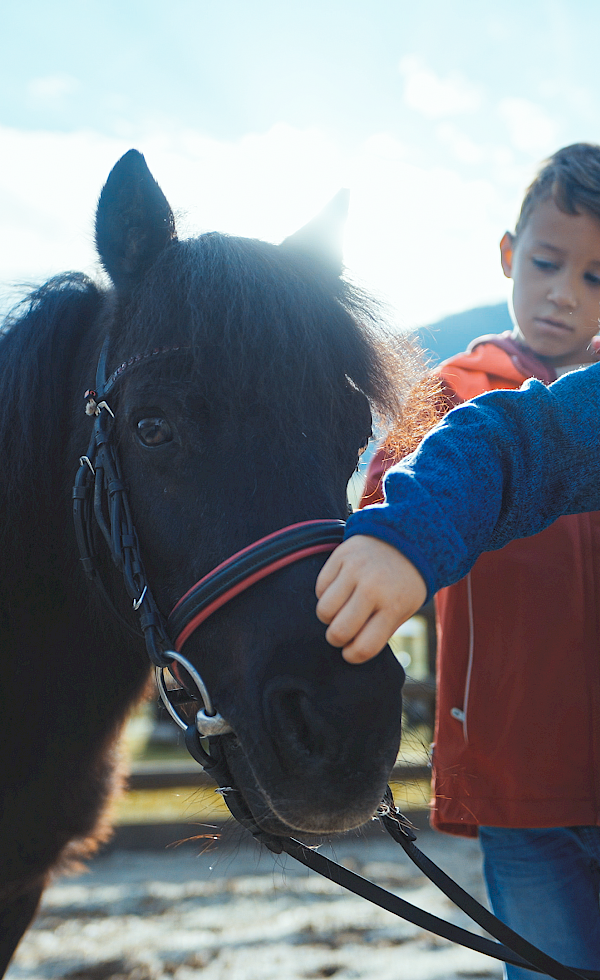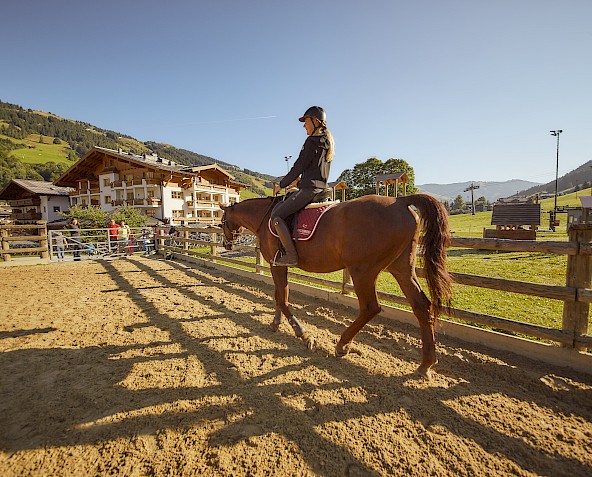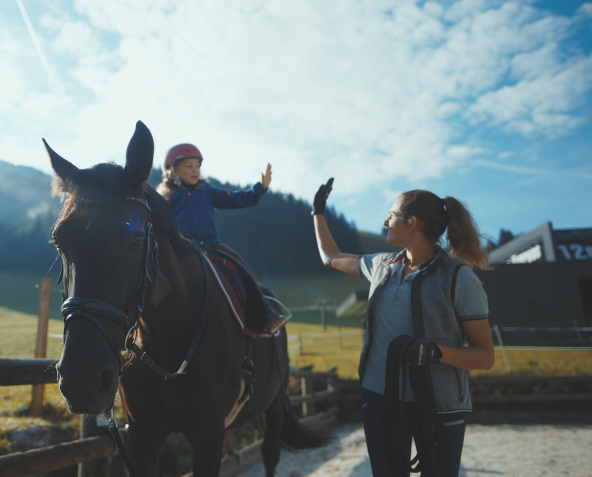Our horses are good and balanced. Nevertheless, they can be startled or react to stimuli from their immediate environment. To ensure the best possible experience with our mounts, there are a few things to keep in mind:
- The riding helmet must be tight and not slip around.
- Riding ankle boots, riding boots or, if possible, sturdy, ankle-high shoes for optimal protection and a secure feeling in the stirrup.
- Greet the horse that you are allowed to ride in a friendly manner: stroking and kind words keep the horse confident and calm.
- Never approach the horse from behind: always maintain eye contact or sufficient distance.
- Don't hand-feed the horse or it will end up looking for food all over your body. You are welcome to put an apple or carrot in the horse's feed bowl or on the ground.
- Be careful and loving when saddling and bridling: slowly and carefully place the saddle on the horse's back and don't strap too tight at first. Wait until the horse willingly accepts the bit.
- Mount slowly and carefully: only bullies will smack the horse in the back.
- Treat your horse like a friend while riding: kicking, hitting, yanking the reins and scolding are not welcome!
- Take care of your horse properly after riding: groom it, pet it and say thank you.
- Walk at the SIDE of horse between head and shoulder.
- The horse is always led from the left side.
- At the grooming station, there must be enough space between the neighboring horses (so that you cannot get trapped between the horses).
- try to exude calm
- no quick movements
- no nervousness



